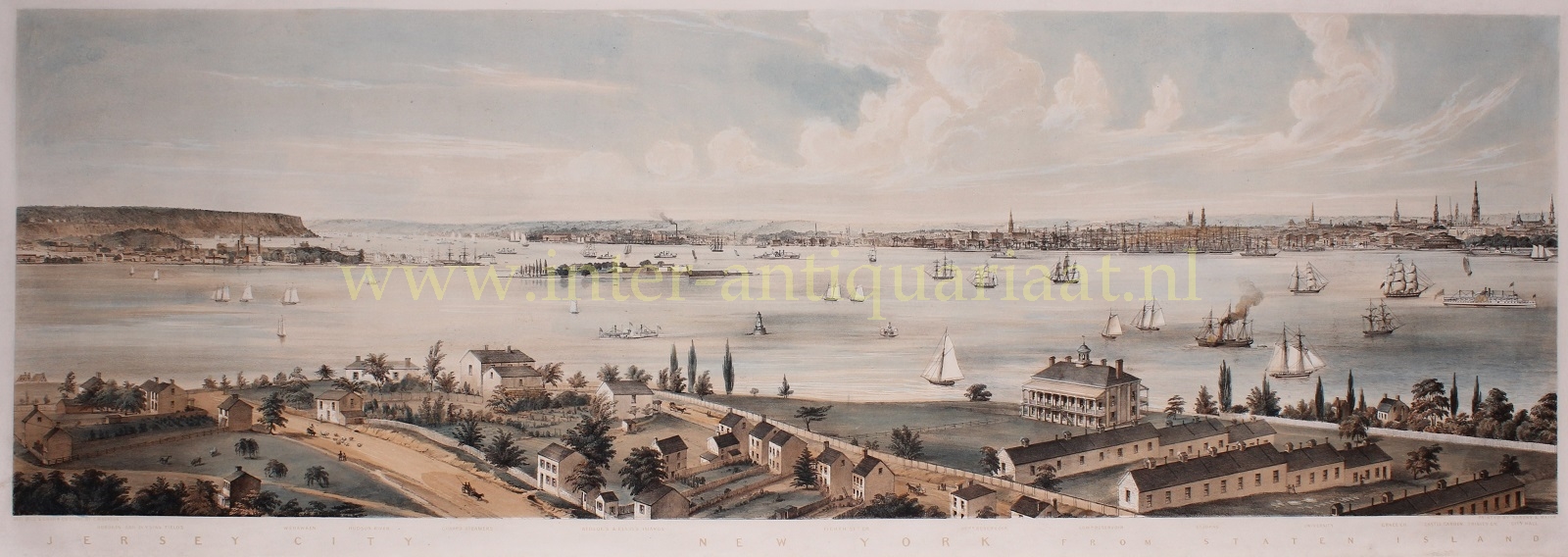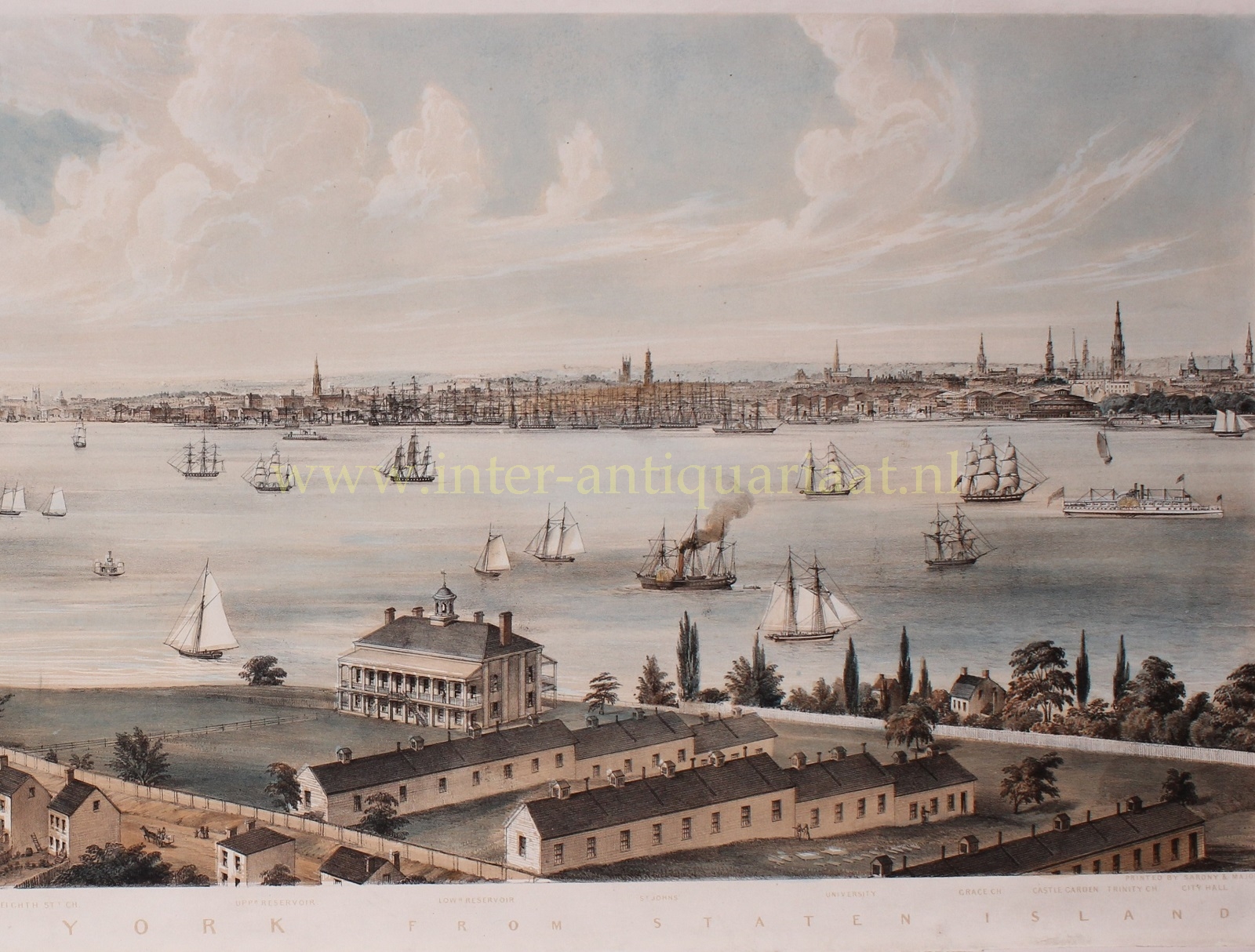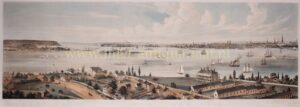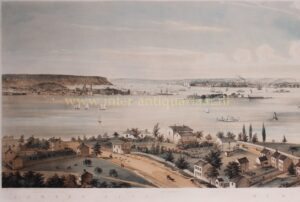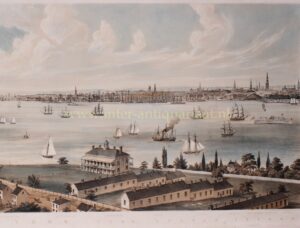MAGNIFICENT MID-19TH CENTURY VIEW OF NEW YORK CITY
“Jersey City, New York from Staten Island” lithograph sketched and drawn by Charles W. Burton and published by Sarony & Major in 1849. With original (?) hand colouring. Size: (paper) 36,5 x 101,5 cm.
In 1849, New York was a rapidly growing city and with a population of over 600,000 people the largest in the United States. It was an important port and commercial center, with thriving factories producing goods such as textiles, printing, and clothing.
Immigrants from Europe were flooding in, bringing with them different cultures, languages, and religions. The city was known for its cultural diversity, high crime rate, and poor living conditions, with crowded tenements and inadequate sanitation facilities. The construction of the Croton Aqueduct system was underway, which would provide fresh water to the city.
The financial sector was also growing, with the New York Stock Exchange established in 1817 and several banks and insurance companies setting up shop.
New York was a city full of energy and vitality, with a vibrant cultural scene. Theaters and music halls were popular, and there was a thriving literary community.
Despite its growth and prosperity, the city’s infrastructure was inadequate to cope with its rapidly growing population. The 1849 cholera outbreak killed over 3,500 residents, highlighting the need for improved public health measures.
Overall, 1849 New York was a city of contradictions, with great wealth and poverty existing side by side.
This lovely view of New York caters to a popular 19th century and mainly bourgeois taste in documenting trade, economic, and urban growth. It thus partakes in the American heritage of the Golden Age of printing, combining technical mastery with a keen sense of observation. The level of detail is remarkable and landmarks such as Castle Garden or Trinity Church are clearly distinguishable; a legend runs below the city view. The composition itself obeys the traditional juxtaposition of elements from the foreground to the background. The perspective does not change as we see the city from a lowered bird’s-eye-view so characteristic of mid-19th century city panoramas.
The present lithograph is a highly detailed record of urban development spanning from Hoboken and the Elysian fields (believed to be the site of the first baseball game) on the left, Ellis and Liberty Islands in the center, to the iconic tower of New York City Hall in the far right.
Literature: Isaac Newton Phelps Stokes: “The Iconography of Manhattan Island”, New York 1915-1928.
Price: Euro 3.500,-


